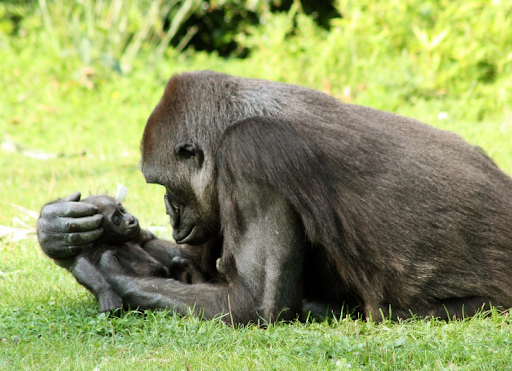Do Animals Mourn?
March 3, 2021 | 3 min read

March 3, 2021 | 3 min read

Death is the ultimate culmination of all forms of life, and hence, warrants a variety of reactions from all life forms. In humans this may involve grieving or mourning, and we can’t help but draw parallels to the animal world for examples of grief. However, many scientists and researchers abound have had their share of inhibitions before labelling any animal action as grief, especially since grief in itself is a multifaceted entity. A feeling characterized by a complex cascade of emotions, also outlined by the various cultural influences which a person is subjected to. It might be difficult to find consistent patterns of grief within humans themselves. Therefore, naturally human grief cannot be ‘carbon copied’ by our animal friends. That being said, we can definitely find similarities, some of which are very interesting to consider and are definitely worth our time.
Even though some animals like lions and spiders would feed on their dead relatives to sustain their nutritional requirements, and animals such as bees or ants would expel the decomposing bodies out of their colonies to maintain hygiene without experiencing any remorse or guilt, animals such as crows and magpies flock around their dead ones and deliver a cacophonous symphony, which may be an act of respect for their dead mate, or just a warning call to summon other birds to the site of death to inspect its cause.
Coming to more ‘Intelligent’ mammals like elephants, dolphins, and non- human primates, their actions might ring closer to the conventional “grief” which we are aware of.
There have been a lot of observational studies on primates - chimpanzees refusing to put down the bodies of their dead babies even after decomposition has begun, bonobos pounding the chests of their dead, langurs comforting each other and surrounding the dead in a mourning-like silence. Perhaps the most radical piece of evidence was documented in 1972 by Dr Jane Goodall where she witnessed a young male chimp named Flint die just a month after the death of his mother Flo –“The male was so despondent following her death that he stopped eating or socializing to the point that he simply didn’t survive.” There is significant scientific evidence too, the most well - known by Dr Anne Engh, who observed increased levels of glucocorticoid levels (stress hormones) in the fecal samples of a group of baboons for more than a month after they witnessed a predator kill one of their own. This was highest in baboons who were closely related to the victim.
Elephants have been documented repeatedly of being aware of their dead one’s remains as well, they show incessant interest in inspecting the bones and carcasses, often revisiting the site of the carcass and standing still as if to pay homage to their dead ones. Many a times, they keep prodding the dead calves, nurturing them as if waiting for them to wake up, and in some instances also cover the body with mud as if trying to bury it.
Orcas and other dolphins similarly carry their dead calves for miles and miles, nurturing them and trying to nurse them back to health, and often react very aggressively, if one tries to separate them from their dead ones.
Even though most of these instances are observational, one may be prodded to think, if grief or the remnants of it could exist in non-human life forms. This prospect has also led to the development of the field of Comparative Thanatology.
In conclusion, animals most certainly are aware of their dead ones, and often ‘grieve’ or ‘mourn’ for them. How different or similar is it to human grief, I leave it to the reader to decide.


